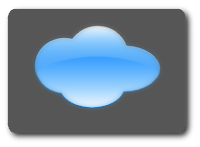Last Friday, I did a presentation to a group of medium businesses. The audience was about 20 IT directors of businesses between 100 and 500 employees (Medium Businesses . A first presentation was made by another presenter about Open Source in general : basic principles, licence/freedom, ecosystem, business model. As a consequence, we could say that Free Libre and Open Source Software (FLOSS) was introduced before my talk.
Every organization in the room use FLOSS. 90% of them ran some kind of FLOSS and were aware of it : Asterisk, Apache, CMS, etc. 10% used some kind of appliance or third-party (SaaS) with FLOSS inside.
Initial presentation : Success stories of Open Source deployment
My presentation was articulated around different business cases / success story. In each case, the initial business goal was stated :
- divide the total cost of ownership by 5 for a desktop project we are doing in China
- step by step migration to open source starting with infrastructure/servers and moving higher in the stack, including OpenOffice and then desktop
- replace legacy POS system for a restaurant franchise : distributed linux thin clients using LTSP-Cluster
- a manufacturing company that migrate its complete IT system : Open Source ERP and Linux thin client in the plant
Challenges for Open Source in the Medium Business market
- Referral cases / business cases more difficult to publicize. It is relatively easy to find information about large migration of large organization. With an efficient PR service and marketing department, they tend to "brag" about their Linux/FLOSS deployment. Mid-size company don't and it is much more difficult to find market evidence of FLOSS Migration. Previsionnist companies (Gartner, etc.) do not analyze this market often...
- An IT director mentioned "We have a very small IT team, it is not possible to learn new technologies". The financial crisis has stretched the existing resources quite a bit and FLOSS, as a new technology to learn, is problematic. IMHO, this is more linked to the "exit cost" of any solution than something specific to FLOSS : solution in IT don't last for ever. Who should pay for the exit cost : the initial technology or the new challenger ? I will certainly blog about this point later on but I strongly encourage IT directors to integrate the exit cost in their initial technology purchase : this is good practice and will bring agility to your organizations.
- Another question "How can we find expertise in FLOSS ?". As a matter of fact, the business model of the Open Source companies was not clear enough and even if the two companies that presented (including Revolution Linux) were able to offer consulting, services and third level support to these companies, they were not known beforehand. The existing suppliers do not support FLOSS : they are used to sell hardware, licences and services.
Transition from a vendor market to buyer market
I think this was the biggest objection. It can be explained this way : "While I have vendors calling me all day long and pushing me new product and services, nobody is marketing open source..."
I think this is true : established companies with sales channel already open tend to rely heavily on interruption marketing to sell new products and new offerings to their existing customers. This is a well known marketing fact : selling a new product to an existing customer cost 7 to 10 time less than selling the same product to a new customer.
In a sense, I think that Open Source companies operate on a much more leaner business model than the closed source one and that marketing/sales is not in their ADN and is not their priority. On another level, Open Source companies can be seen as start-up/immature companies compared to some of the players in the IT market that exists since 20+ years with an established sales, marketing and partner management department.
My answer was that Open Source is essentially a buyer market, not a vendor market. If you want to select an open source software, you can certainly find between 10 and more than 1000 open source product depending on what you are looking for (ex: a Web Server, a CMS, etc.). As a consequence, you have to define your need carefully, select one or several open source solution and then evaluate the maturity of the solution.
In a sense, it is a very different experience than buying a proprietary product or even more easily done, fill a PO and acquire a new proprietary solution from you existing supplier...
Opportunities
As always, I think that all those problems are great opportunities : how can Open Source company embrace those problems and provide a better service to the medium business market ? How to lower the barrier so that FLOSS can become mainstream ?
Do you have similar experience about medium businesses and FLOSS ?




